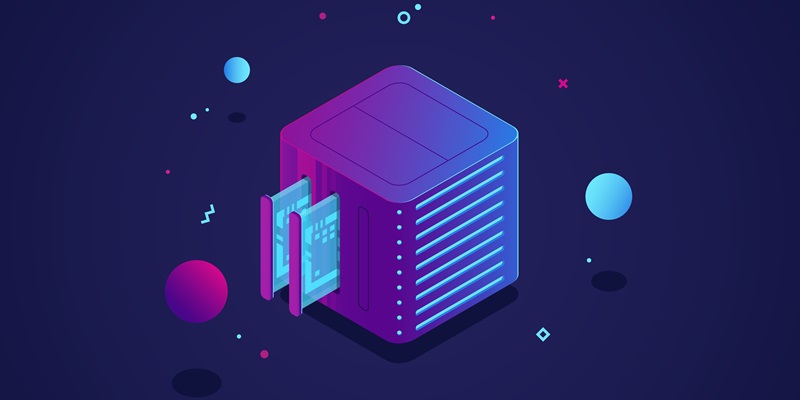When it comes to choosing a Storage-as-a-Service (STaaS) solution for your business, one crucial aspect to consider is the vendor’s Service Level Agreements (SLAs). These agreements encompass a wide range of commitments, including uptime, performance, data loss prevention, hardware upgrades, energy consumption, and ransomware protection. In this article, we will delve into the importance of assessing vendor SLAs and explore the key SLAs to look for when evaluating STaaS providers.
Uptime Guarantee
First and foremost, any reputable STaaS service should provide SLAs regarding uptime. An uptime guarantee offers a clear expectation of the level of availability the vendor commits to delivering. For businesses heavily reliant on uninterrupted access to their data, a robust uptime guarantee is critical to ensuring seamless operations and preventing productivity losses.
Performance Commitments
Performance SLAs are another vital aspect to consider. These commitments often come in the form of Key Performance Indicators (KPIs) that can be tracked to analyze specific aspects of the vendor’s performance. By setting performance benchmarks, businesses can assess how well the STaaS provider meets their requirements, ensuring optimal storage performance and efficient data access.
Energy Consumption Guarantees and Upfront Cost Coverage
The next generation of STaaS offerings goes beyond traditional SLAs, with vendors now committing to energy consumption guarantees and even paying upfront for customers’ energy and rack space costs. By choosing a provider that focuses on minimizing power usage, businesses can not only reduce their environmental footprint but also cut down on operational costs. Look for SLAs that assure power efficiency and guarantee an agreed number of Watts per Tebibyte (TiB), ensuring maximum energy savings.
Power Efficiency Assurance with Agreed Watts per Terabyte (TiB)
To achieve significant power efficiency, STaaS providers should leverage modern flash storage solutions capable of reducing energy usage and carbon emissions by up to 85%. With an emphasis on sustainability, businesses can not only enhance their environmental stewardship but also make substantial savings on energy expenses. Prioritize vendors that offer guarantees for power efficiency, promoting a greener and more cost-effective storage infrastructure.
Environmental Benefits: Reducing energy consumption and carbon emissions
By adopting next-generation STaaS solutions, businesses can achieve substantial environmental benefits. These solutions leverage advanced flash storage technology, resulting in up to 85% reduction in energy usage and carbon emissions. By embracing sustainable storage practices, companies not only contribute to a greener world but also align themselves with environmentally conscious values.
AIOps-based monitoring for hardware upgrades and optimization
To effectively upgrade hardware and optimize energy and space savings over time, AIOps-based monitoring is crucial. This advanced monitoring system allows businesses to track their infrastructure in real-time, ensuring smooth hardware upgrades and efficient resource allocation. By harnessing the power of artificial intelligence, AIOps facilitates proactive decision-making and enables businesses to stay ahead of their storage needs.
Transparency Tools for Tracking Asset Performance and Usage
To accurately assess the performance and usage of STaaS solutions, businesses should seek tools that provide full transparency. These tools offer insights into asset performance, capacity, energy consumption, and rack space usage. By having access to real-time information on these key metrics, businesses can make informed decisions regarding their storage infrastructure, ensuring optimal efficiency and cost-effectiveness.
Up-to-date information on contracts, subscriptions, and lifecycle state
Keeping track of contracts, subscriptions, and the lifecycle state of assets is crucial for managing Storage-as-a-Service (STaaS) services effectively. Look for vendors that offer comprehensive tools and platforms that provide up-to-date information on these aspects. This transparency enables businesses to have complete visibility and control over their STaaS subscriptions, ensuring accurate budgeting and avoiding any unwanted surprises.
Storage-as-a-Service (STaaS) is no longer solely focused on cloud storage or budgetary convenience. The next generation of STaaS solutions emphasizes meaningful SLAs that guarantee various aspects of services delivered through a cloud-like operating model, whether on-premises or in the cloud. By carefully assessing vendor SLAs, particularly those related to uptime, performance, energy consumption, and transparency, businesses can choose an STaaS provider that aligns with their specific needs and goals. Consider the outlined SLAs as a guide to selecting a reliable and efficient STaaS solution for your business, setting the foundation for secure and scalable data storage and management.

